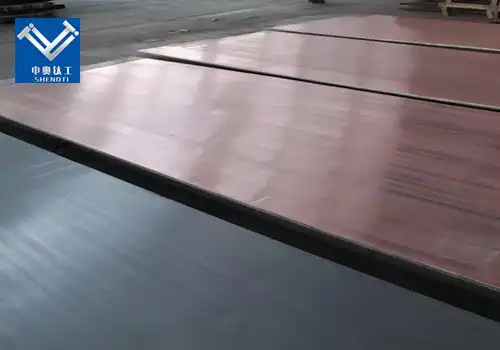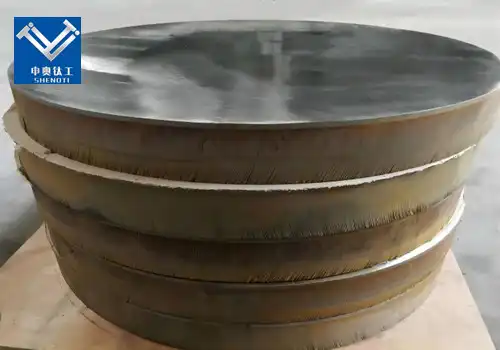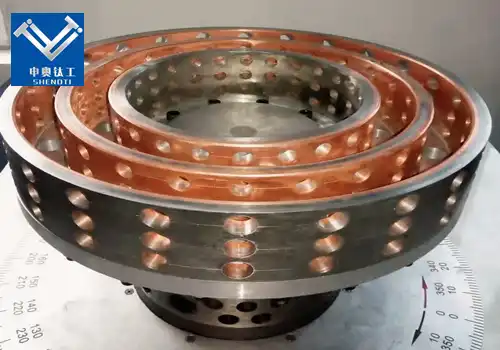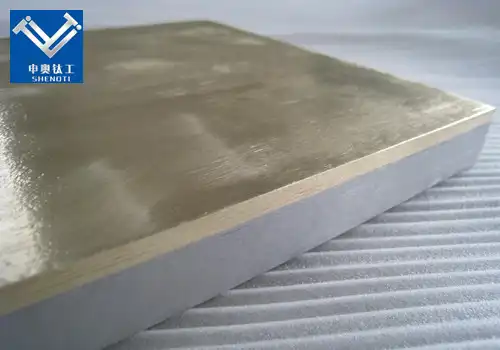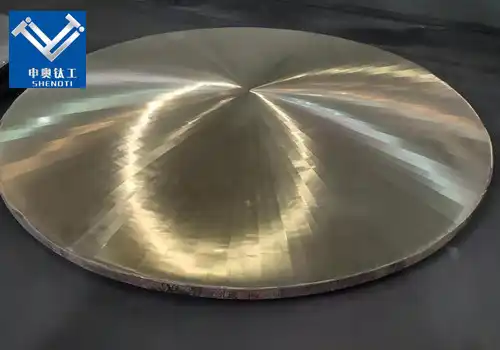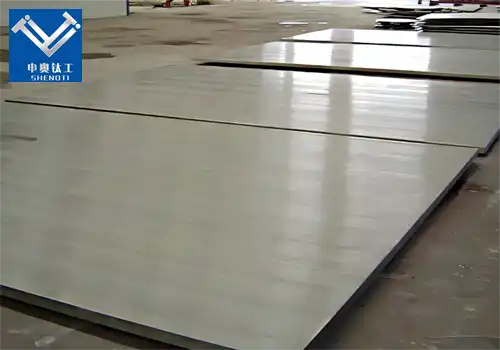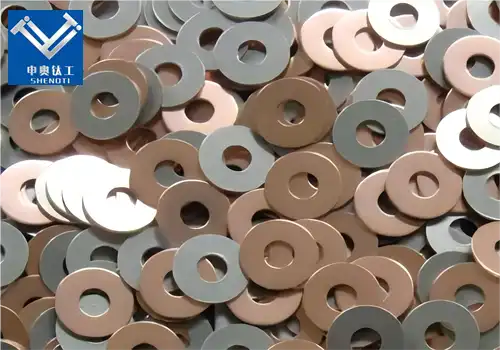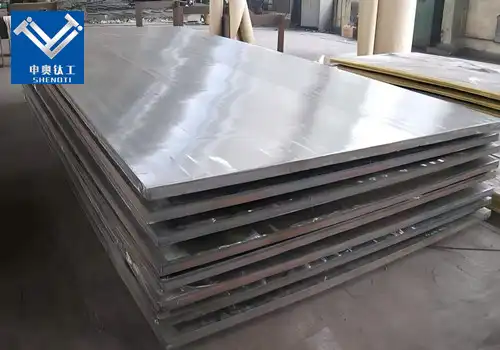
Why Use Stainless Steel Composite Plates for Pressure Vessels?
2025-07-18 16:25:43
Changer in Industrial Applications
What Is a Stainless Steel Composite Plate for Pressure Vessels?
A stainless steel composite plate for pressure vessels is a specially engineered material that combines the corrosion resistance of stainless steel with the strength and cost-efficiency of carbon steel or other base metals. Through advanced bonding technologies—such as explosion cladding, roll bonding, or hot pressing—manufacturers create a bi-metal or multi-metal plate with exceptional structural and functional properties.
This innovative composite material plays a vital role in industries such as oil & gas, chemical processing, power generation, marine engineering, and food processing. With increasing demand for reliable and corrosion-resistant materials, stainless steel composite plates have become the preferred choice for pressure vessel manufacturing worldwide.
Why Use Stainless Steel Composite Plates for Pressure Vessels?
1: Corrosion Resistance and Cost Efficiency
One of the most significant advantages of a stainless steel composite plate for pressure vessels is its cost-performance ratio. Stainless steel alone is expensive, especially for large pressure vessel applications. However, by bonding a thin layer of stainless steel onto a carbon steel base, manufacturers reduce material costs while still achieving excellent corrosion resistance on the working surface.
2: Structural Integrity and Mechanical Strength
Composite plates retain the high tensile strength, fatigue resistance, and load-bearing capabilities of their carbon steel core. This makes them ideal for use in high-pressure environments, such as chemical reactors, heat exchangers, and boiler systems.
3: Flexibility in Design and Fabrication
Due to their dual-layer nature, these plates can be easily welded, bent, and shaped into complex geometries. Engineers benefit from greater flexibility in designing pressure vessels that meet both functional and aesthetic demands.
Key Manufacturing Techniques for Stainless Steel Composite Plates
1: Explosion Bonding Technology
Explosion bonding is a high-energy process that uses controlled detonations to force two dissimilar metals together at the molecular level. This results in a high-quality metallurgical bond that is incredibly strong and resistant to separation, even under extreme conditions.
2: Hot Roll Bonding
In hot roll bonding, the metals are heated to high temperatures and rolled together under pressure. This process is often used for large-format stainless steel composite plates destined for massive pressure vessel shells or heads.
3: Hot Press Cladding
Hot pressing involves placing the metal layers in a high-temperature press and applying uniform pressure. This method ensures full-surface bonding and is particularly suited for smaller, precision-engineered components.
Industries That Rely on Stainless Steel Composite Plates for Pressure Vessels
1: Oil and Gas Industry
From offshore rigs to onshore refineries, pressure vessels in the oil and gas sector must withstand aggressive chemical environments. Stainless steel composite plates offer outstanding protection against H₂S corrosion, seawater exposure, and temperature fluctuations.
2: Chemical Processing Plants
Chemical vessels containing sulfuric acid, nitric acid, or chlorinated compounds demand robust, corrosion-resistant materials. The stainless steel clad layer ensures product purity while extending equipment lifespan and reducing maintenance frequency.
3: Food and Beverage Industry
Hygienic surfaces and corrosion resistance are essential in food-grade processing equipment. Stainless steel composite plates meet FDA and EU regulations while lowering production costs.
4: Power Generation and Energy Storage
Boilers, condensers, and heat exchangers in nuclear and thermal power plants frequently operate under high pressure and temperature. Composite plates provide the thermal resistance and reliability needed for these demanding applications.
Material Specifications and Standards
A quality stainless steel composite plate for pressure vessels typically includes:
Cladding Layer: 304, 316L, 321, 2205 duplex stainless steel
Base Layer: Q345R, SA516 Gr.70, or other boiler-quality carbon steel
Bonding Method: Explosion bonded, roll bonded, or hot pressed
Thickness Range: Total thickness from 6mm to 200mm, cladding thickness from 1mm to 12mm
Compliance: ASME, ASTM, GB/T, and other international standards
How to Choose the Right Stainless Steel Composite Plate?
1: Define the Operating Environment
Select your materials based on the expected pressure, temperature, and corrosive exposure. For example, 316L stainless steel is ideal for chloride environments, while 2205 duplex stainless steel offers high strength for compact vessel designs.
2.Consider Fabrication Requirements
If your pressure vessel design requires extensive forming or welding, choose a composite plate with excellent ductility and weldability. Explosion bonded plates, for instance, maintain strong intermetallic bonds even after fabrication.
3: Consider Fabrication Requirements
If your pressure vessel design requires extensive forming or welding, choose a composite plate with excellent ductility and weldability. Explosion bonded plates, for instance, maintain strong intermetallic bonds even after fabrication.
4: Verify Certifications and Traceability
Ensure the supplier provides complete material traceability, ultrasonic testing reports, mechanical testing data, and certifications like ASME U Stamp or PED approval.
Case Studies: Real-World Applications
1: Petrochemical Plant in the Middle East
A major petrochemical facility in the UAE required pressure vessels for sulfuric acid storage. By using 304L stainless steel composite plates, the company reduced material costs by 35% and extended vessel life expectancy by 15 years.
2: Food-Grade Equipment in Southeast Asia
A dairy processing plant needed hygienic and corrosion-resistant tanks. Composite plates with a 316L stainless steel surface were fabricated into cylindrical pressure vessels, ensuring food safety compliance while reducing capital expenditure.
The Future of Pressure Vessel Manufacturing
The demand for stainless steel composite plate for pressure vessels is growing rapidly as industries prioritize sustainability, efficiency, and longevity. With ongoing advancements in bonding technology and materials science, we can expect even lighter, stronger, and more cost-effective composite plates in the near future.
Manufacturers are also integrating digital tools for precise quality control, traceability, and predictive maintenance—making stainless steel composite plates a core component of the next generation of industrial pressure equipment.
Conclusion: Invest in Stainless Steel Composite Plates for High-Performance Pressure Vessels
Choosing a stainless steel composite plate for pressure vessels is a strategic decision that brings together the best of two worlds: the corrosion resistance of stainless steel and the durability of carbon steel. Whether you're building a chemical reactor, a storage tank, or a heat exchanger, these plates offer unmatched performance, flexibility, and value.
As industries evolve, companies that adopt advanced materials like stainless steel composite plates will gain a competitive edge in reliability, efficiency, and compliance.
About Us
Baoji City ShenAo Metal Materials Co., Ltd. specializes in the manufacturing of stainless steel composite plates, titanium-clad plates, copper-aluminum composite sheets, and other high-performance metal cladding solutions. With ISO, ASME, and PED certifications, we serve global customers in petrochemical, power, marine, and food processing industries.
We offer full technical support, custom fabrication, and fast global delivery.
Email: zh@baojiti.com.cn
Website: shenaocladplate.com
Phone: +86-18729731603
YOU MAY LIKE











